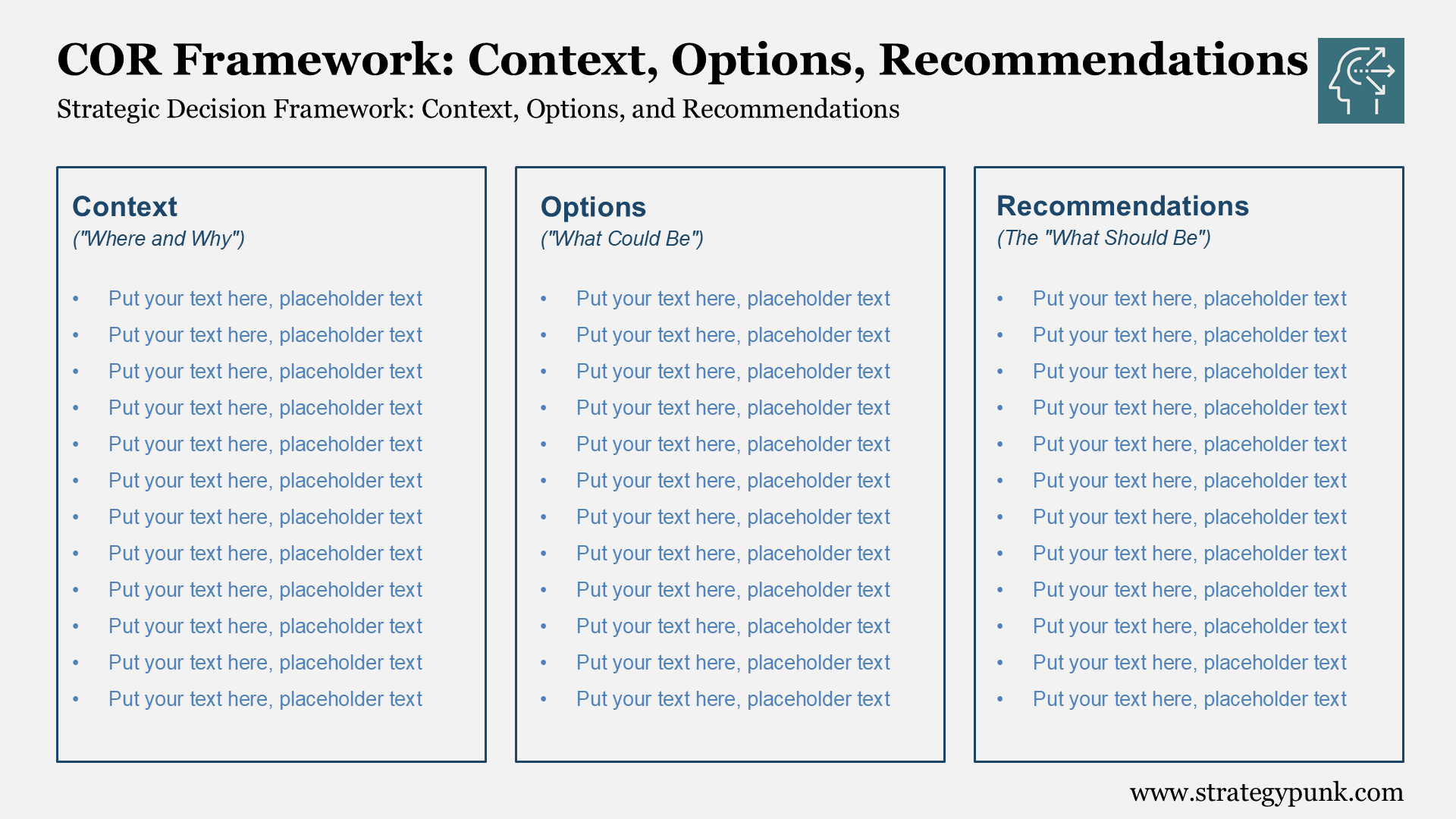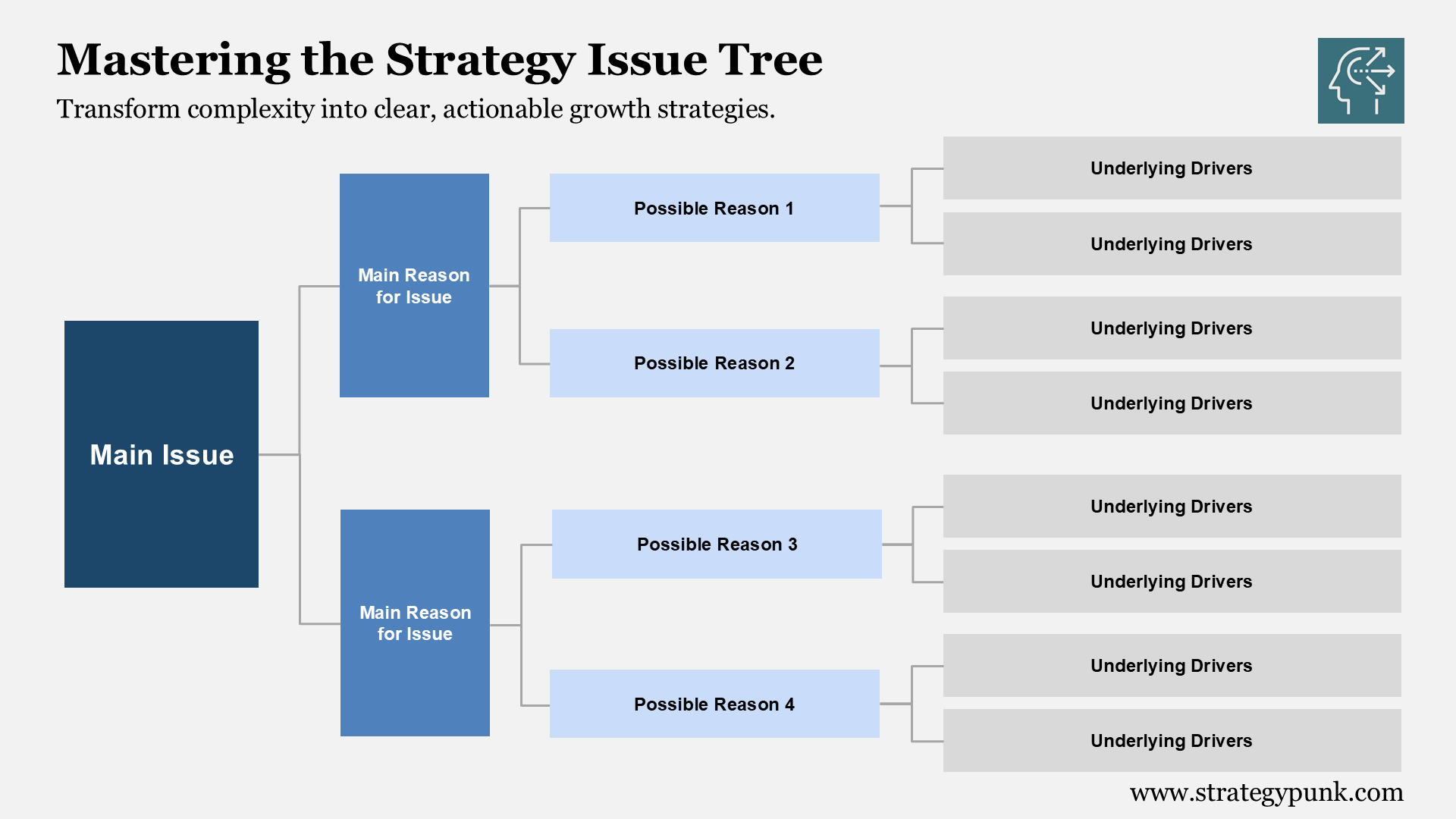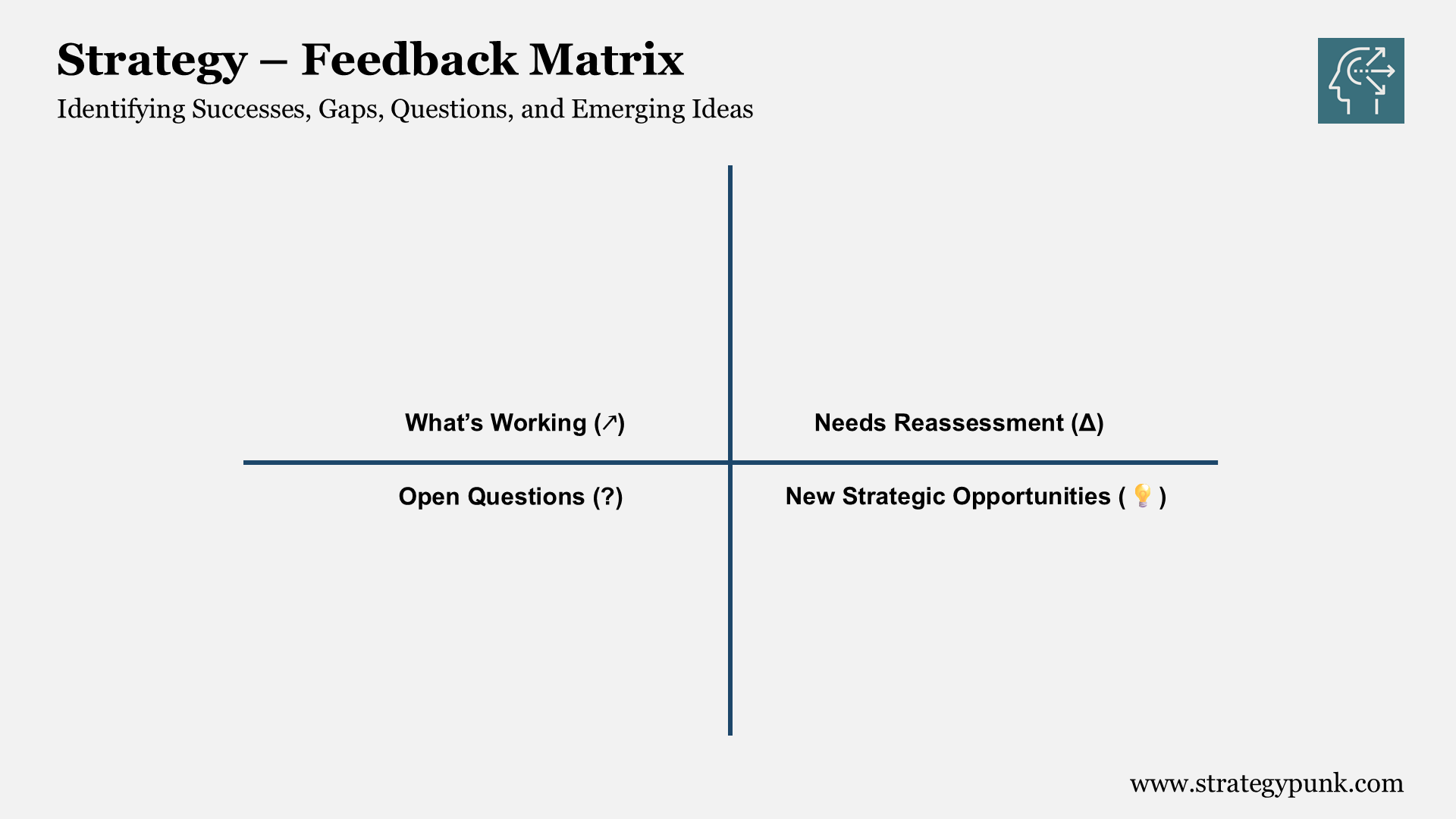The Power of One Big Thing: Exploring the Hedgehog Concept in Business Strategy
Discover the Hedgehog Concept and its importance in business strategy. This guide explains how to identify your passion, strengths, and economic driver to excel in your niche. F
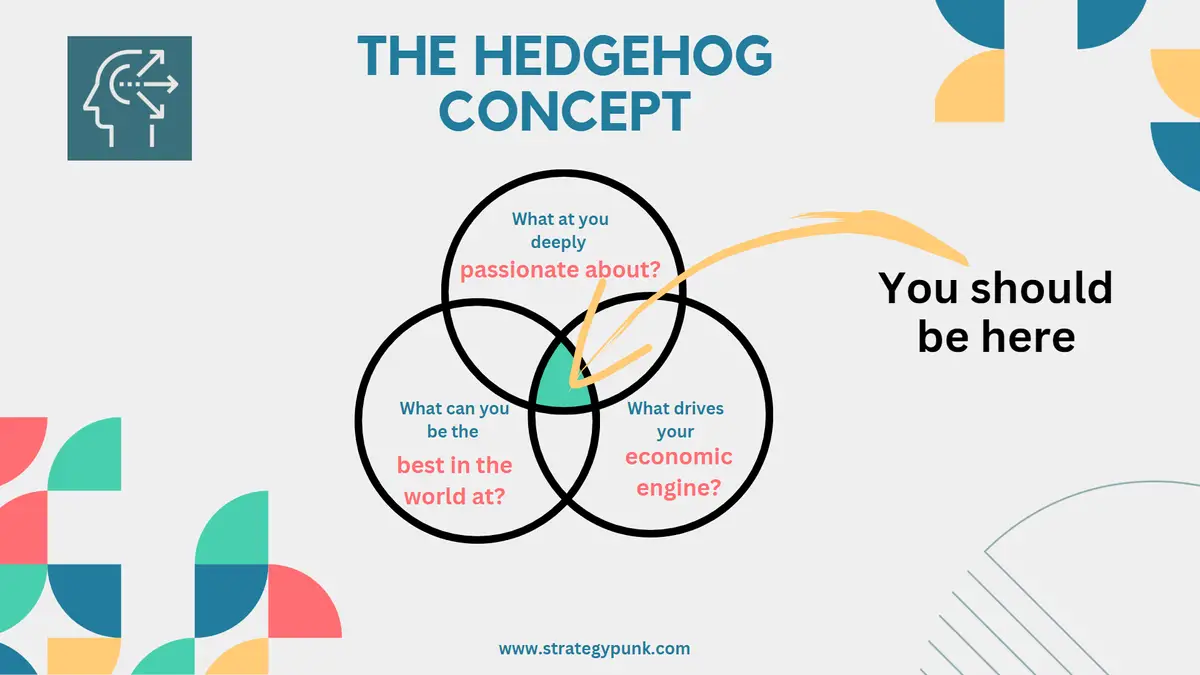
Introduction
The Hedgehog Concept is a business strategy Jim Collins popularized in his book Good to Great. This concept is based on the ancient Greek parable: "The fox knows many things, but the hedgehog knows one big thing." In the myth, the fox uses many strategies to try to catch the hedgehog, but the hedgehog knows how to defend itself by rolling into a ball.
The Hedgehog Concept is a simple yet powerful tool that can help businesses succeed. It is a framework that allows companies to identify their core strengths and focus on what they do best. The concept is based on three circles:
- What you are deeply passionate about.
- What you can be the best in the world.
- What best drives your economic or resource engine?
By finding the intersection of these three circles, businesses can identify their Hedgehog Concept and focus their efforts on what they do best.
Jim Collins argues that truly great companies are oriented around a Hedgehog Concept. Companies with a clear understanding of their Hedgehog Concept can make strategic decisions aligned with their strengths, say no to opportunities that do not align with their Hedgehog Concept, and focus their resources on what they do best. Ultimately, the Hedgehog Concept is a tool that can help businesses achieve long-term success.
Understanding the Hedgehog Concept
What is the Hedgehog Concept?
The Hedgehog Concept is a business strategy Jim Collins introduced in his book "Good to Great." It is a simple yet powerful concept that helps organizations focus on their strengths and achieve their goals. The idea is based on an ancient Greek parable that states, "The fox knows many things, but the hedgehog knows one big thing." In the myth, the fox uses many strategies to try to catch the hedgehog, but the hedgehog always wins by doing one thing exceptionally well.
The Three Circles
The Hedgehog Concept is based on the intersection of three circles: passion, best in the world, and economic engine.
The first circle is passion, which refers to what the organization is deeply passionate about.
The second circle is best in the world, which refers to what the organization can be the best at.
The third circle is an economic engine, which refers to what best drives the organization's financial or resource engine.
By finding the intersection of these three circles, organizations can identify their core strengths and focus on what they do best.
Why is it called the hedgehog concept?
The name "hedgehog concept" comes from an ancient Greek parable about the hedgehog and the fox.
In the parable, the fox is a cunning and versatile animal that uses many strategies to try to catch the hedgehog, which is a simple and focused creature. However, no matter what the fox does, the hedgehog always wins by doing one thing exceptionally well: rolling up into a tight, spiky ball that the fox cannot penetrate.
Jim Collins, a renowned author and management consultant, borrowed this idea from the parable to develop the hedgehog principle. He used it as a metaphor for the statement that the most successful companies and individuals have a clear and straightforward focus, can ignore distractions, and stay true to their core strengths.
The hedgehog concept is based on the idea that three circles overlap:
- What you are deeply passionate about.
- What you can be the best in the world at.
- What drives your economic or resource engine?
Collins argues that if you can find the intersection of these three circles, you will have a clear and focused strategy that will enable you to achieve greatness.
So, why the hedgehog? According to Collins, the hedgehog represents the idea of simplicity, focus, and clarity. You can achieve extraordinary results by focusing on one thing you are truly great at and ignoring everything else. The hedgehog also represents the idea of persistence and resilience - no matter what obstacles come your way, you can always roll up into a spiky ball and stay true to your core strengths.
Developing Your Hedgehog Concept
Developing your hedgehog concept involves identifying your core values, defining your core competencies, and finding your economic engine. By understanding these three aspects of your organization, you can develop a clear and focused strategy to guide your decision-making and help you achieve your goals.

Identifying Your Core Values
To identify your core values, you need to understand what drives your organization and what it stands for. This involves looking beyond your products or services and examining the underlying beliefs and principles that guide your actions. By defining your core values, you can create a vision that inspires and motivates your team and helps you make decisions that align with your organization's purpose.
Defining Your Core Competencies
Your core competencies are the unique strengths and abilities that set your organization apart. These may include specific skills, technologies, or processes you excel at and your overall approach to doing business. By defining your core competencies, you can focus on the areas where you have the most significant potential for success and keep your resources manageable.
Finding Your Economic Engine
Your economic engine is the mechanism that drives your revenue and profit growth. This may involve identifying your most profitable products or services, finding new markets or opportunities, or transforming your organization to align with your core competencies. By understanding your economic engine, you can make strategic decisions that maximize your revenue and profit ratio and position your organization for long-term success.
Developing your hedgehog concept requires deeply understanding your organization's strengths, weaknesses, and potential. By focusing on your core values, core competencies, and economic engine, you can create a clear and focused strategy that sets you apart from your competition and helps you achieve your goals.
Applying the Hedgehog Concept
Once a company has identified its Hedgehog Concept, its next step is applying it to its business strategy. This involves aligning all aspects of the company, including its products, services, and brand, with the three circles of the Hedgehog Concept.
Implementing Your Hedgehog Concept
To implement the Hedgehog Concept, a company must focus on the activities within the intersection of the three circles. This means identifying the areas where the company can be the best in the world, where it is passionate, and where it can drive its economic engine.
One way to implement the Hedgehog Concept is to use the flywheel effect. This involves identifying the key drivers of the company's success and then focusing on improving them. By doing this, the company can create a self-sustaining cycle of success that builds momentum over time.
Another critical aspect of implementing the Hedgehog Concept is to keep things simple. The Hedgehog Concept is based on the power of simplicity, so it is essential to avoid complexity and focus on what the company does best. This means saying "no" to opportunities outside the intersection of the three circles and staying true to the company's guiding principle.
Companies that successfully implement the Hedgehog Concept can achieve greatness. By focusing on what they do best and aligning all aspects of the business with their guiding principle, they can create a strong brand that resonates with customers. This can lead to increased profitability, customer loyalty, and long-term success.
Many resources, including videos, articles, and consulting services, are available to help companies apply the hedgehog concept. Companies can achieve lasting success by taking the time to understand and implement the concept effectively.
Examples of Companies with a Hedgehog Concept
Several companies have effectively applied the Hedgehog Concept to achieve great success. Here are some examples:
How Walgreens Used the Hedgehog Concept
Walgreens is a perfect example of a company that applied the Hedgehog Concept to achieve greatness. What are some examples of companies that have successfully implemented the Hedgehog Concept?
How can an organization determine what they are genuinely passionate about?
What potential challenges may organizations face when trying to implement the Hedgehog Concept? From 1975 to 2000, Walgreens delivered stock returns 15 times the general market return, outperforming its comparison company, Eckerd. Walgreens' resurgence was fueled by an utterly simple concept: to build the most convenient drugstores with the industry's highest profit per customer visit.
Walgreens achieved this by focusing on three intersecting circles:
- What they could be the best in the world: Walgreens realized they could be the best at convenience retailing. They focused on providing a superior shopping experience with various products and excellent customer service.
- What they were passionate about: Walgreens was passionate about customer service and innovation. They believed that by providing the best customer experience, they could differentiate themselves from their competitors and build a loyal customer base.
- What drove their economic engine? Walgreens realized it was caused by high profit per customer visit. To increase the yield per customer visit, they focused on providing various products and services, including prescriptions, beauty products, and convenience items.
By focusing on these three intersecting circles, Walgreens built the most convenient drugstores with the industry's highest profit per customer visit. This helped them achieve great success and outperform their competitors.
Other companies that have successfully applied the Hedgehog Concept include Wells Fargo, which turned from a mediocre Citicorp wanna-be to one of the best-performing banks in the world, and Southwest Airlines, which became the most successful airline in history by focusing on low-cost, point-to-point flights.
The Hedgehog Concept PDF
Free Template
Want to implement the Hedgehog Concept in your business strategy?
🚀 Download our comprehensive Hedgehog Concept PDF template now! 📥
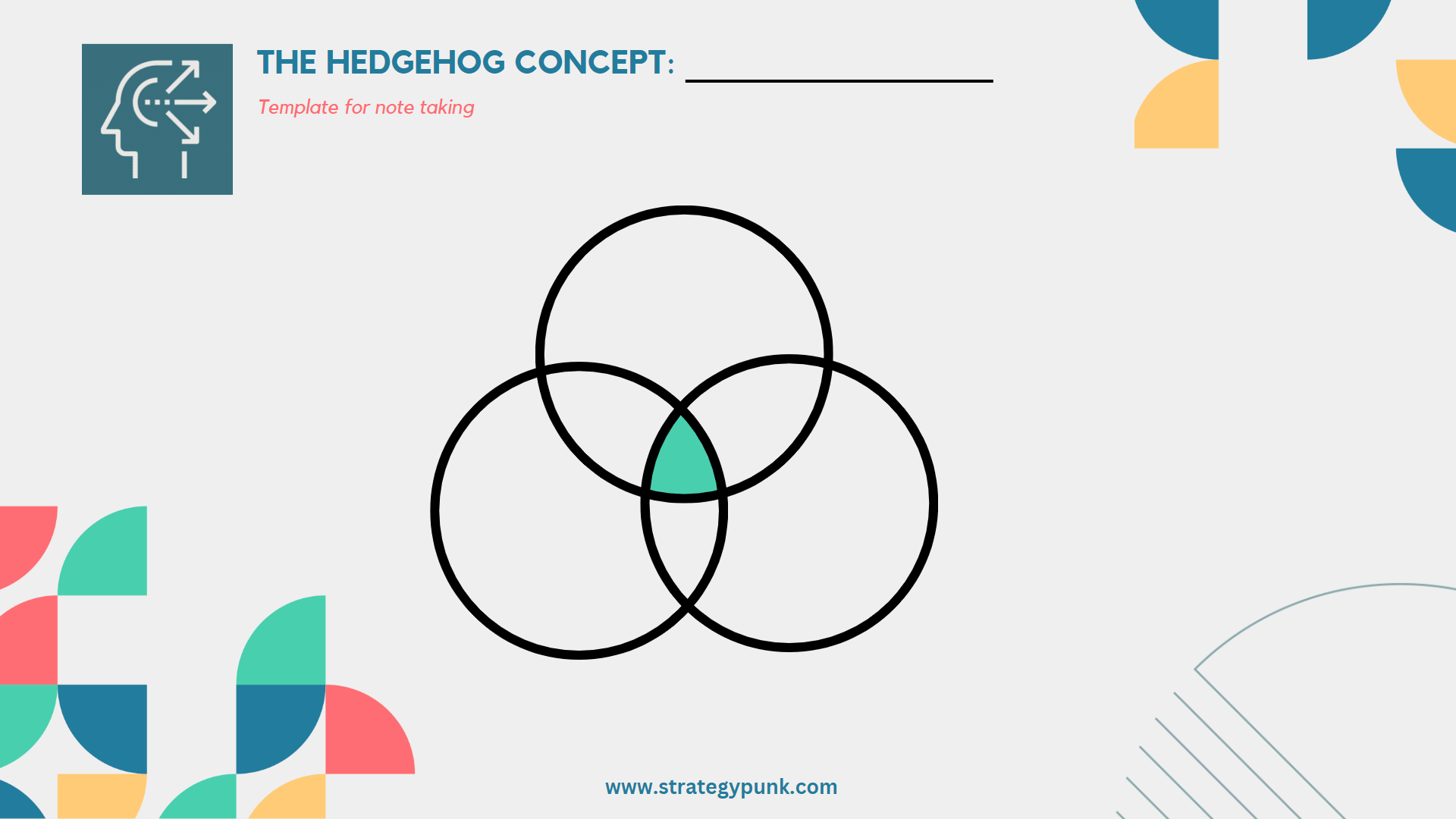
It's an easy-to-use template to help you identify your passion, strengths, and economic drivers.


